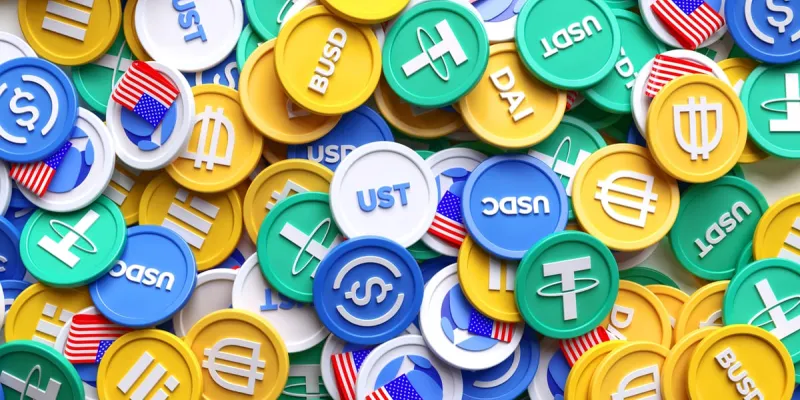The GENIUS Act’s Quiet Antitrust Blueprint
September 3, 2025
The GENIUS Act, short for Guiding and Establishing National Innovation for U.S. Stablecoins Act, is here. The Act legitimises the US stablecoin market by establishing the first comprehensive federal framework for stablecoins.
Interestingly however, the Act has a lot of antitrust and competition underpinnings. This begs the question - will the Act make the stablecoin market a vibrant, competitive one? Or, in simple terms, does legitimisation translate into enablement? Let us unpack.
Market Size
The Act provides for regulatory approvals for stablecoins in a dual federal-state regulatory framework. Many new players are likely to appear in the market, increasing the market size. According to Citi, in the bull case, the market size of stablecoins is estimated to rise from USD 240 billion today to USD 3.7 trillion by 2030. And, a larger pie is always a win for competition.
Dual Federal and State Licensing
For domestic US companies, the Act includes pathways for banks, nonbanks, as well as others at a federal as well as state level.[i] At a federal level, banks, nonbanks and federal branches of foreign banks (such as HSBC, Deutsche Bank) are eligible to be licensed as permitted “payment stablecoin issuers”, regulated by a “primary federal stablecoin regulator”. Stablecoin issuers with up to USD 10 billion or less in consolidated total outstanding stablecoins (such as new stablecoin start-up) will be allowed to also choose a state-level regulatory regime. However, this will require the state’s regulatory framework to be “substantially similar” to the federal regime, as certified by the Stablecoin Certification Review Committee. [ii] A state-qualified issuer with more than USD 10 billion in consolidated total outstanding stablecoins will transition to federal oversight. [iii]
Therefore, in the short-medium term, given established relationships with the “primary federal stablecoin regulator”, bank subsidiaries will find it easier to launch stablecoin businesses than others. They already have established channels for maintaining reserves and ensuring AML/CFT compliance. Contrastingly, nonbanks and state-registered start-ups will face heavy compliance burdens at the outset. Depending on the regulatory framework of the concerned state, state-registered start-ups may not even have the incentive to grow beyond the USD 10 million threshold.
However, in the long term, the market will see participation of others. Afterall, consumer protection and AML/CFT provisions cannot be discounted or delayed.
Foreign Comparable Regulator
The Act makes it unlawful for any digital asset service provider (think Binance, Coinbase) to offer, sell, or otherwise make available in the US a stablecoin issued by a foreign issuer, unless the issuer, among other things, is regulated by “comparable” regulatory regime, as determined by a unanimous recommendation by the same Stablecoin Certification Review Committee. [iv]
In the long term scenario, this may pan out like the “adequacy” mechanisms in several data protection laws globally, allowing data to be transferred without additional safeguards from country A to B, where B is deemed to have “adequate” data protection safeguards, compared to A. Such a determination is likely to be underscored by geopolitical relationships, and not just legal factors.[v]
In the immediate scenario, this increases the legal and compliance burden for USD-denominated, foreign issued stablecoin Tether. Tether has 65%+ market share in the market for USD-denominated stablecoins, with a market capitalisation of USD 160 billion! And competition laws always state, dominance is not wrong, abuse of dominance is. Why then penalise a company that legitimately attained dominance?
Technology Companies: Hello, is that DMA?
A public company that is not predominantly engaged in one or more financial activities shall not be permitted to issue stablecoins, unless it obtains a unanimous vote of the Stablecoin Certification Review Committee.[vi]
Large publicly listed companies, such as Google, Meta, Apple, Amazon, or X, will find it harder to venture into the stablecoin market. Development of financial offerings has been at the heart of monetisation strategies for large technology companies, looking to diversify their revenue streams (especially non-ad revenue). This provision hits at the core of these strategies.
Also, this provision is reminiscent of the European Digital Markets Act where “gatekeepers” are subject to specific ex-ante, or preventive obligations when entering new business lines.[vii]
Tying
A public company that is not predominantly engaged in one or more financial activities will also be prohibited from tying its stablecoins to other products that they offer. [viii]
This further makes it harder for technology companies, which may already be struggling with getting approvals, to hard-wire their own stablecoins into their existing ecosystems, that have long attained critical user mass. For example, if Meta goes forward with its plan of launching Libra (now Diem), and that as a stablecoin pegged to the USD, it must decouple stablecoin use from platform benefits. There is no offering Libra for WhatsApp remittances, such that users can’t use other competing stablecoins. Like DMA, this stifles innovation.
Interoperability
The Act provides that stablecoin regulators may prescribe standards for issuers to promote compatibility and interoperability with stablecoins, and the broader digital finance ecosystem (including accepted communications protocols and blockchains). [ix] This could lower switching costs and enhance competition, especially for smaller players, but will definitely take time.
From the above, it is evident that the GENIUS Act is not just a financial regulation bill—it is a competition and market structure law, cloaked in the language of digital finance. Under the calibrated pathways, the Act legitimises stablecoins under the aegis of banks, cautiously admits non-banks and non-financial players (albeit with added layers of scrutiny), but hinders “big-tech” companies, as well as foreign issuers. In doing so, the law projects an incumbency bias. It also emphasises institutional lineage-based regulation, and not functional activity-based regulation. Thus, the legitimisation of stablecoins under the GENIUS Act may not necessarily translate into enablement for all. And, competition thrives not when incumbents are legitimised, but when innovators and challengers are enabled.
You may also like








